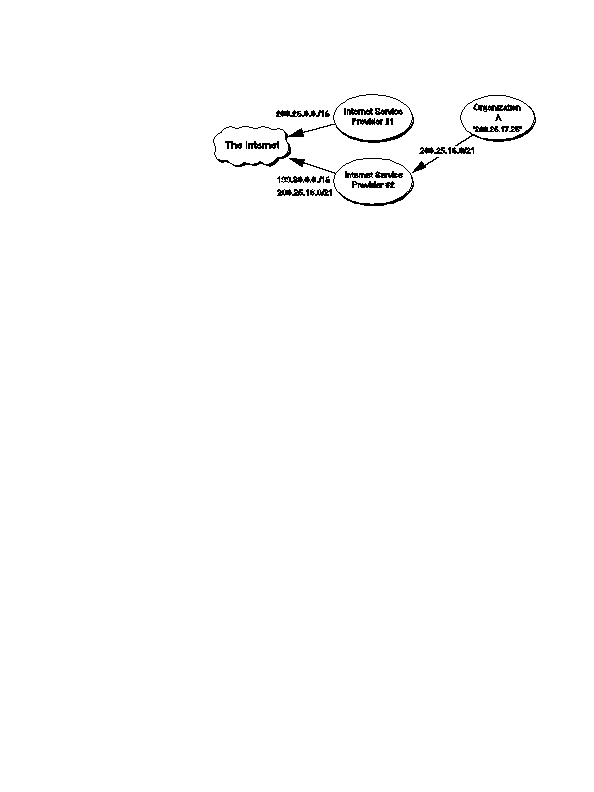
F I G U R E 3 5 . I S P # 2 's M o re S p e c i f i c R o u t e i n t o t h e I n t e r n e t
The best strategy is for Organization A to retain ownership of its
address space and have ISP #2 advertise an exception (more specific)
route into the Internet. The exception route allows all traffic for
200.25.0.0/16 to be sent to ISP #1, with the exception of the traffic to
200.25.16.0/21. This routing is accomplished by having ISP #2 adver
tise, in addition to its own 199.30.0.0/16 block, a route for
200.25.16.0/21. Refer to Figure 35.
Using the longest match forwarding algorithm, Internet routers will
route traffic addressed to host 200.25.17.25 to ISP #2, which will in
turn route the traffic to Organization A. Clearly, the introduction of a
large number of exception routes can reduce the effectiveness of the
CIDR deployment and eventually cause Internet routing tables to begin
exploding again.
Additional Practice with CIDR
Appendix E provides exercises using CIDR.
3 9
footer
Our web partners:
Inexpensive
Web Hosting
Jsp Web Hosting
Jsp Web Hosting
Cheapest Web Hosting
Java Web Hosting
Quality Web Templates
Dreamweaver Web Templates
Frontpage Web Templates
Jsp Web Hosting
Cheapest Hosting
Cheapest Web Hosting
Java Web Hosting
Tomcat Web Hosting
Quality Web Hosting
Best Web Hosting
Java Web Hosting
Visionwebhosting.net Business web hosting division of Vision Web Hosting Inc.. All rights reserved

